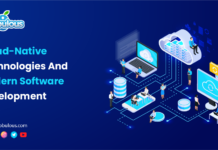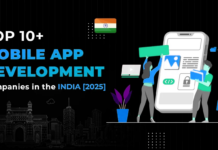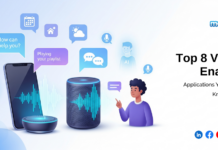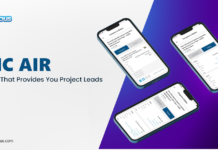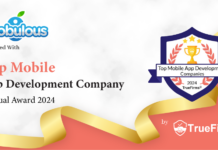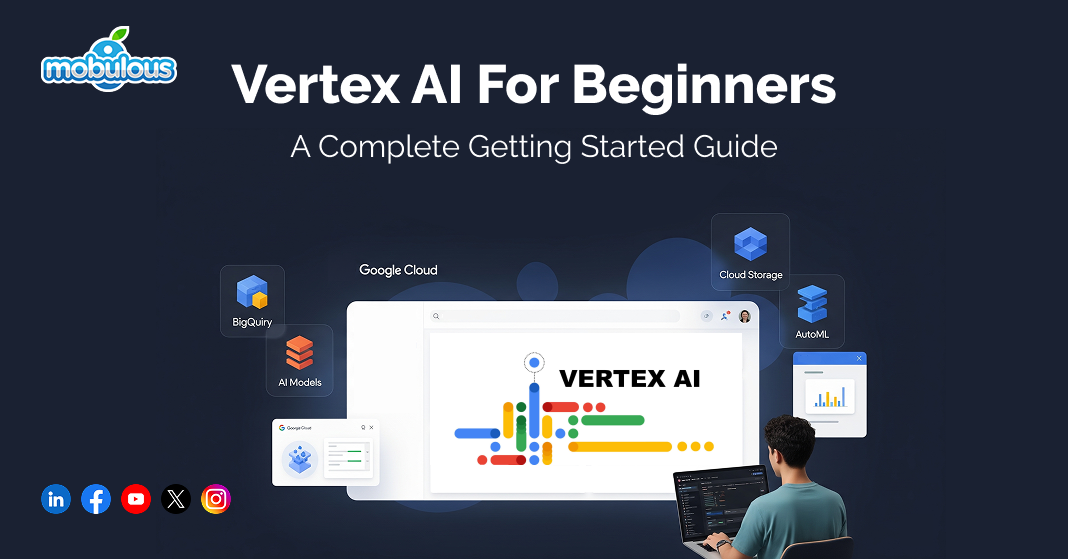Vertex AI: A Comprehensive Guide for Beginners to Get Started
Vertex AI is Google Cloud’s all-in-one platform for machine learning and artificial intelligence, bringing together all the tools you need to train, deploy, and manage ML models. Instead of juggling multiple services, it lets you operate from one centralized platform.
Think of it as the “Swiss Army knife” of AI tools, supporting everything from beginner projects to enterprise-level AI systems.
Now, the question is: What can Vertex AI actually do? In short, quite a lot.
It allows users to import and process data from services like BigQuery and Cloud Storage. You can train models using AutoML without coding or opt for custom training with your own code. You can also monitor, evaluate, and scale models with ease, making AI model workflows efficient, powerful, and more accessible for both data scientists and product managers.
Importance of Vertex AI
Vertex AI makes machine learning and AI easier for all industries, and one of its strengths is simple data ingestion. Users can quickly pull data from sources like Google Cloud Storage and BigQuery, helping set up model training with less effort. It’s especially useful for large datasets requiring cleaning and transformation.
Another key feature is its data labeling service, which is essential for accurate models. Vertex AI helps create high-quality training data manually or automatically and improves prediction accuracy and model performance.
For businesses, Vertex AI is a full solution, and companies in finance, healthcare, and retail use it to build smart systems. These systems handle fraud detection, marketing, and maintenance tasks. Vertex AI also offers strong Machine Learning Operations (MLOps) tools, helping manage, monitor, and update models easily. Teams stay in control and avoid errors.
How Vertex AI Works
Vertex AI simplifies the machine learning process. From data upload to deployment, everything is connected. It includes tools for preparation, training, evaluation, and monitoring, removing the need for multiple services. Users can focus on building models, not managing tools.
Vertex AI supports AutoML, which is ideal for beginners and custom model training. Upload data and set goals, and the system trains a model without code. Custom training is for advanced users; you must use your own code and frameworks like TensorFlow or PyTorch, giving flexibility for all skill levels.
The platform supports team collaboration, and resources can be shared and changes tracked. Vertex AI also scales easily, so start with small data and expand to large training jobs without changing your setup. This is perfect for quickly growing AI projects.
Key Components of Vertex AI
Let’s explore the main components that make this unified platform so powerful.
1. AutoML
If you don’t have much experience with coding or model building, AutoML is your best friend. It allows you to train high-quality models with minimal manual effort. Just plug in your data, define the task, and let AutoML do it. It supports image, video, text, and tabular data.
2. Custom Training
Have your own model and want more control? Custom Training lets you upload your own code. You can train models in your preferred ML framework using CPUs, GPUs, or TPUs. Perfect for researchers and engineers who want flexibility without giving up scalability.
3. Model Registry
Keeping track of models can be a nightmare as the Model Registry acts like a library. One where you store, version, and organize all your models in one place. It also integrates directly with pipelines and deployment services, providing a seamless experience.
4. Vertex AI Pipelines
Think of Pipelines as the backbone of your machine learning workflow. From data preprocessing to model evaluation, the pipelines allow you to automate and reproduce every step. This is a huge time-saver and ensures consistency across projects.
5. Model Garden
Model Garden is a library of pre-trained models. You can use them out of the box or fine-tune them to fit your specific needs. From image recognition to NLP, it’s packed with resources to get you started fast. It also includes Vertex AI models that are used for advanced tasks like content creation and summarization.
6. Generative AI Capabilities
This is where the magic really happens. With Vertex AI, you can create models that write text, generate images, or even make decisions. Think ChatGPT-style responses or AI-generated product descriptions. These tools are incredibly powerful, especially for industries like marketing, media, and customer service.
7. MLOps and Data Management
Vertex AI is built with production in mind. This means robust MLOps (Machine Learning Operations) tools for managing the model lifecycle, monitoring performance, and retraining when needed. You also get advanced data management features, including checking your inputs and outputs.
Advantages of Vertex AI
Now, let’s look at the reasons why so many people are switching to Vertex AI. These advantages make a big difference in real-world projects.
1. Unified Platform
Everything you need is in one place, so you don’t have to piece together different services, saving time and making development easier. Whether you’re building traditional models or using Vertex AI, you get a smooth, all-in-one experience.
2. Support for Open-Source Models
Using TensorFlow or PyTorch already? Great. Vertex AI supports both, so you can bring your own models or use pre-trained ones. This is super useful if you’re working on tasks like content creation or image generation.
3. Simplicity and Scalability
You don’t need to manage servers as Vertex AI handles it for you, scaling automatically based on your workload. Training on a huge dataset? No problem. Just click run and go; even beginners can launch powerful models without deep infrastructure knowledge.
4. Efficient Infrastructure
Because Vertex AI runs on Google Cloud, it uses powerful resources. You get access to TPUs, GPUs, and auto-scaling clusters. Your ML tasks run faster and more cost-effectively, which is great for deep learning.
5. Seamless Data-to-AI Integration
Vertex AI connects all your data, whether it is live in BigQuery, Cloud Storage, or even Google Sheets. This tight integration means less manual work, giving you faster development and more accurate results. In generative tasks, having smooth access to data is a huge advantage.
Best Practices for Using Vertex AI
To get the most out of Vertex AI, follow these best practices.
1. Clean and Prepare Your Data
Garbage in, garbage out. Always preprocess your data:
- Handle missing values
- Normalize features
- Remove outliers
This ensures your model learns the right patterns.
2. Choose the Right Model Type
Different tasks need different models, so pick the one that fits your use case. AutoML is easy to use, but custom models give more control. Choose based on your project’s specific goals.
3. Monitor and Evaluate Continuously
Don’t just train and use, but also keep monitoring your models:
- Use Vertex AI Model Monitoring
- Track drift and retrain when needed
- Evaluate metrics regularly
4. Optimize for Performance
Use features like hyperparameter tuning, feature importance, and explainable AI. These help you understand your model better and improve it. Optimization is key, especially for complex models like Vertex AI.
5. Leverage Vertex AI Pipelines
Automate everything you can:
- Schedule recurring training
- Automate evaluation and deployment
- Ensure reproducibility
For large projects, especially those involving Vertex AI, automation is key to scaling and reliability.
6. Think Ethically
As with all AI, especially generative models, consider:
- Bias detection
- Data privacy
- Fairness in predictions
Vertex AI provides tools to help identify and mitigate these issues, so use them.
Limitations or Challenges of Vertex AI
Of course, no tool is perfect. Here are some challenges to keep in mind when using Vertex AI.
1. Learning Curve for Beginners
While Vertex AI simplifies a lot, beginners still face a learning curve, especially when configuring pipelines. Google’s documentation helps, but expect to spend time understanding the ecosystem. Take time to go through the documentation because it will pay off.
2. Cost Management
The flexibility and power of Vertex AI come at a price. If you don’t monitor usage, costs can creep up, especially with GPU/TPU training. Always:
- Set budgets
- Use cost-monitoring tools
- Shut down unused resources
3. Data Privacy and Security
When working with sensitive data, be sure to comply with the regulations:
- GDPR
- HIPAA
- SOC 2
Vertex AI supports encryption and secure access, but responsible usage is on you.
4. Model Bias Risks
Generative models can replicate biases in training data. Always:
- Audit training data
- Validate outputs
- Use explainability tools
Bias is a big concern in Vertex AI applications like content creation, so be extra cautious.
Conclusion
If you’re starting your journey in machine learning, Vertex AI is a great place to begin. It’s user-friendly and powerful. You can build, train, and deploy models without switching tools.
Everything happens in one place, saving you time and reducing confusion. When you’re working with Vertex AI, the combination of power and simplicity truly makes a big difference.
Sure, there are some challenges, but with smart practices and careful monitoring, you can get great results. Whether you’re building your first model or scaling a complex project, Vertex AI has your back.
FAQs – Vertex AI
Q1. What is Vertex AI primarily used for?
Ans. Vertex AI is a Google Cloud platform designed for developing, training, and deploying machine learning models. It offers a unified environment where users can manage end-to-end ML workflows, from data preparation to model deployment and monitoring.
Q2. Is Vertex AI free to use?
Ans. No, Vertex AI is not free. It’s a paid cloud service billed based on usage. However, new Google Cloud users receive $300 in credits, which can be used to explore Vertex AI and other Google Cloud services during a trial period.
Q3. Does Vertex AI use Python?
Ans. Yes, Vertex AI supports Python through its SDK, allowing developers to interact with the platform programmatically. Python is widely used for machine learning tasks, and Vertex AI also supports other languages like Java and Node.js.
Q4. Is Google Vertex AI good?
Ans. Yes, Vertex AI is considered a powerful platform for building and deploying machine learning models. It offers advanced tools and integration with Google Cloud services, making it ideal for professionals, although it may require a learning curve for beginners.
Q5. Where is Vertex AI used?
Ans. Vertex AI is used in industries such as finance, healthcare, retail, and more. It helps teams build predictive models, automate workflows, and develop AI-powered applications using a single, unified platform for end-to-end machine learning.
Q6. Is Vertex AI an API?
Ans. Yes, Vertex AI offers a suite of APIs for tasks like training models, making predictions, managing datasets, and running pipelines. It’s not a single API but a collection designed to support the full ML lifecycle.
Q7. What type of users is Vertex AI most suitable for?
Ans. Vertex AI is best suited for data scientists and ML engineers. It supports custom model development and automation through tools like Vertex AI Pipelines, making it ideal for teams managing complex or large-scale ML workflows.
Q8. Is Vertex AI better than Google AI Studio?
Ans. Vertex AI is more advanced and flexible than Google AI Studio, offering better tools for customization and deployment. AI Studio, however, is simpler and more beginner-friendly, ideal for quick prototyping and those new to machine learning.
Q9. What is the difference between Vertex AI and ChatGPT?
Ans. Vertex AI is a platform for building AI models, while ChatGPT is a specific conversational AI model by OpenAI. Vertex AI supports various AI applications, including generative models, whereas ChatGPT is a prebuilt solution for natural language interactions.
Q10. What is similar to Vertex AI?
Ans. Alternatives to Vertex AI include OpenAI API, Azure AI Foundry, H2O AI Cloud, AWS Cloud AI Developer Services, and Alibaba Cloud Machine Learning. These platforms also provide tools for developing, training, and deploying AI and ML models.



